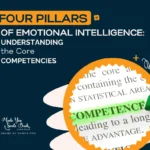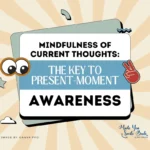May is mental health awareness month, which brings us to talk about stigma, percentages of untreated mental illness, and interventions to help. With one in five people in the United States alone having an untreated mental illness, a lot of people are hurting. Compounding this is the 27% of individuals who find themselves cut off from their families.
The natural support system for humans is to belong to a family unit, and this system has failed millions of people. What can ordinary people do about this? What if we started by leaning into a not-so-revolutionary thought? Start with what you can do.
Read a book. This article discusses the book Whole Brain Living, The Anatomy of Choice, and The Four Characters That Drive Our Life by Jill Bolte Taylor.
It Started with a Book Recommendation
If you’ve read any of my articles here or on my blog, you know I am passionate about helping individuals who struggle with estrangement. Recently, my therapist suggested the book Whole Brain Living. My usual book de jour is on family dynamics, trauma, and estrangement. Standing on the New York Times Bestseller list for 63 weeks, Jill Bolte Taylor’s exquisite work of art will surprise you. As you might imagine, a therapist reads a lot about how to heal people. This book is more than healing; it is about revolutionizing our lives.
For example, like many of my clients, coaching or therapy, I struggle with emotional reactivity. I call it my inclination to insert my foot in my mouth almost whenever I am with my daughter-in-law. When this happens, the worry portion of my psyche gets scared that I might have gone too far this time. In a few seconds, I am anxious, and my heart is beating faster all because I reacted, instead of doing what Jill Bolte Taylor calls going for a “brain huddle.”
Throughout the book, we learn how each of the four parts of the brain participates in how we operate as humans. Brain huddles are another way to describe being mindful. It is a genius way to teach us anatomically genius wannabees what is happening between our two ears. Not only this, but we feel empowered to respond better so we can continue to connect with those we love.
More to the point, Bolte Taylor’s journey began in 1996, when, at the age of 37, she had a stroke as a Harvard neuroanatomist and lost her ability to understand language and speak. It took her years to regain the capacity to speak, walk, and function and finally write a book, My Stroke of Insight. Her TED talk of the same name catapulted “Ted Talks” and her career into the atmosphere of grand recognition, with this being the first talk to go viral.
In fact, after her TED Talk, the notoriety brought about inquiries from individuals seeking assistance with stroke experiences and questions about how individuals can find the peace that Bolte Taylor so eloquently describes in her breakthrough talk. Bolte Taylor said, “You have the power to choose moment by moment who and how you want to be in the world.” That being the case, like the scores of writers asking Bolte Taylor, “How do we find this peace?” begs an answer.
Finding Peace
To tell the truth, finding peace has been a significant lifetime quest with pages and pages of some of the best self-help books. Maybe you’ve also been on this book journey with Brene Brown’s Daring Greatly and Atlas of the Heart or enjoyed The Four Agreements by Miguel Luis. What about The Power of Now by Eckhart Tolle? Who still needs to read Victor Frankl’s Man’s Search For Meaning? Which books have been instrumental in moving you along in your insight? Whole Brain Living has been my latest read, with the biggest bang for my audible buck.
More to the point, therapy and coaching are meaningful professions in which I get to meet extraordinary people who, in essence, are on a journey of finding inner peace. I listen to their distress and suggest strategies to help them feel better. Mostly, we land on relationships, how a parent, an adult child, an in-law, a sibling, or a coworker triggers a reaction. Often, these reactions are noticeable and unappreciated.
We talk about the parasympathetic nervous system, How The Body Keeps the Score by Bessel Van Der Kolk, and the impact of trauma and how it affects us in the here and now. It is a learning journey and experimenting with strategies to gain peace through less reactivity and daily tools.
Four Areas in Our Brain
I was joyfully beside myself when I found Whole Brain Living. While there are naysayers who are skeptical of her somewhat nonscientific approach, Taylor’s method of describing the four areas of the brain with associating characters brought to life material I had been focused on with my clients for years. Therapists call it mindfulness and cognitive behavior therapy, which is a means to pay attention without judgment on how we think so we can reframe thoughts to be productive instead of damaging. Bolte Taylor’s book guides us through how the four areas of the brain participate in who we are and how we think.
Specifically, Whole Brain Living describes four distinct groups of brain cells as four characters that define us: Character One, representing left thinking; Character Two, representing left emotion; Character Three, representing right emotion; and Character Four, representing right thinking. Imagine having a workable strategy to address thoughts, feelings, and actions so that we are not ruled by automatic and potentially problematic responses. Bolte Taylor explains that every thought, feeling, or action we have relies on the activity of brain cells. Moreover, each character exhibits specific skills, experiences particular emotions, and generates distinctive thoughts.
For this reason, Bolte Taylor’s story and empowering read guides us to know who our four characters are and how they show up for us in everyday and chaotic interactions. The Brain Huddle is how we can take charge of our impulsive reactions and choose how we want to act during stressful situations.
Response vs. Reaction
Typical talk or cognitive behavioral therapy can help someone gain this insight into being empowered to respond rather than react. It requires skills taught and applied and a determination to stay focused on mental well-being. However, Whole Brain Living weaves a colorful design and a lovely personal story to show hope in improving our thoughts and actions. It is a win-win supplement to self-help books, workshops, and therapy alone.
On the other hand, some boomers were all about social change in the 60s and 70s and now are still entrenched in traits such as optimism, hard work, teamwork, and ambition. We are still saying we need to be the change the world needs to see. Navigating generational changes and challenging world events requires unquestionable modeling as never before.
Working with dysfunctional families and having personal experience has impressed upon me the necessity of “taking the higher road” in our relationships. Interactions with family can be the most challenging work of our lives. For many, the work is to manage carefully the tension between the distress in our lives and how we process our emotions. In essence, we learn how to move forward even amid intense challenges. My program, Embracing Renewal after estrangements helps family members take the higher road for their well-being.
More to the point, managing relationships to show up as our best selves with a focus on connecting with those we love feels more complicated. The world at large feels so much more stressful than ever before. In fact, depression, anxiety, drug use, and suicide are at record levels. However, our story can start with the slightest change of one person yearning to tweak their behaviors, impacting the relationships around them. Whole Brain Living is an outstanding guide that helps us change our thinking and behavior. As Norman Peale puts it, “Change your thoughts and change the world.”
Let’s Have a Conversation:
What books have you found to be most helpful in your wellness journey? What are your thoughts on taking the higher road?




